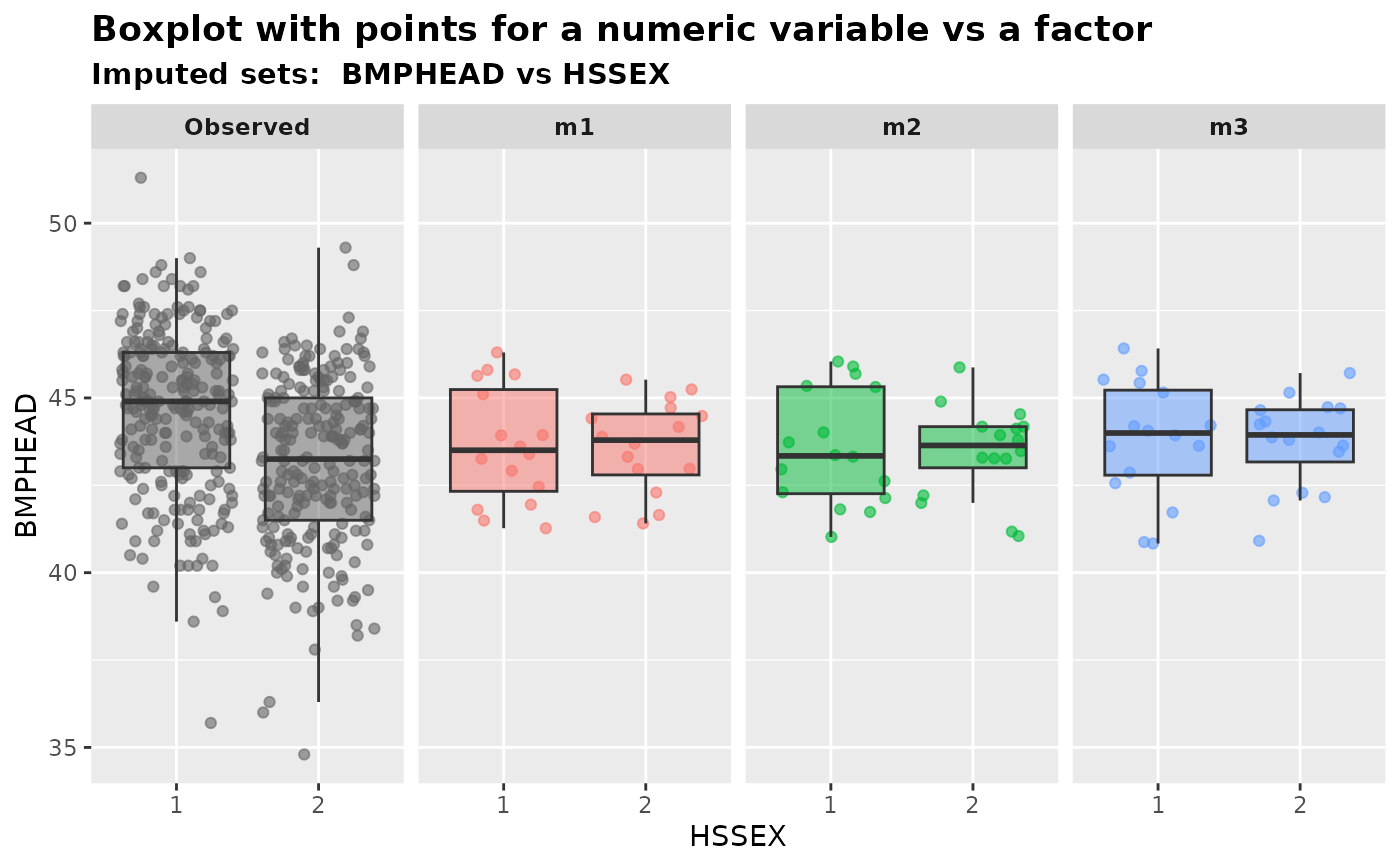Box plots with points for one numeric variable vs one factor (or integer) variable.
Source:R/plot_2vars.R
plot_1num1fac.RdPlot observed values versus m sets of imputed values for one numeric variable vs one factor (or integer) variable using ggplot2.
Usage
plot_1num1fac(
imputation.list,
var.num,
var.fac,
original.data,
true.data = NULL,
color.pal = NULL,
shape = FALSE
)Arguments
- imputation.list
A list of
mimputed datasets returned by themixgbimputer- var.num
A numeric variable
- var.fac
A factor variable
- original.data
The original data with missing data
- true.data
The true data without missing values. This is generally unknown in practice. If the true data is known (e.g., in cases where it is generated by simulation), it can be specified in this argument. The output will then have an extra panel called
MaskedTrue, which shows values originally observed but intentionally made missing.- color.pal
A vector of hex color codes for the observed and m sets of imputed values panels. The vector should be of length
m+1. Default: NULL (use "gray40" for the observed panel, use ggplot2 default colors for other panels.)- shape
Whether to plot shapes for different types of missing values. By default, this is set to FALSE to speed up plotting. We only recommend using `shape = TRUE` for small datasets.
Value
Box plot with jittered data points for a numeric/integer variable; Bar plot for a categorical variable.
Examples
# obtain m multiply datasets
params <- list(max_depth = 3, subsample = 0.8, nthread = 2)
imputed.data <- mixgb(data = nhanes3, m = 3, xgb.params = params, nrounds = 30)
# plot the multiply imputed values for variables "BMPHEAD" versus "HSSEX"
plot_1num1fac(
imputation.list = imputed.data, var.num = "BMPHEAD", var.fac = "HSSEX",
original.data = nhanes3
)
